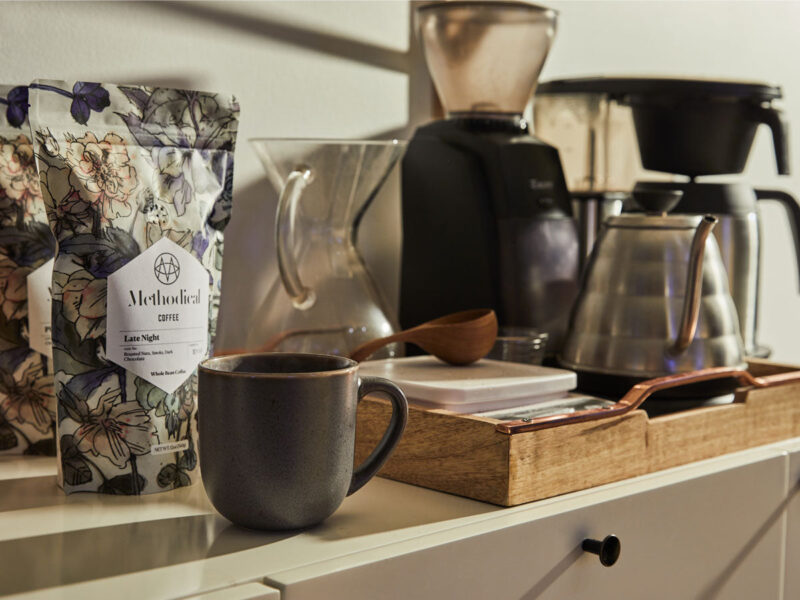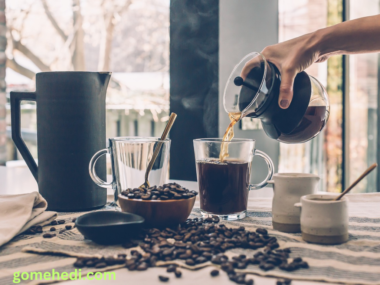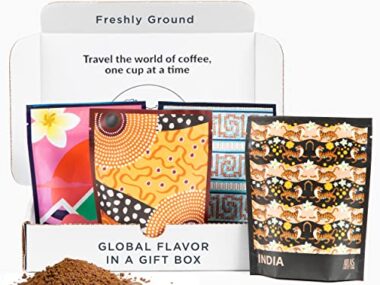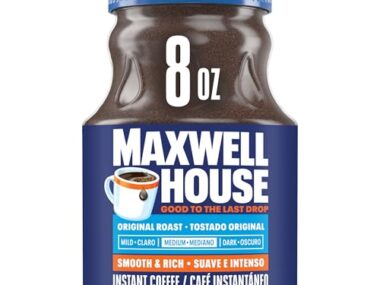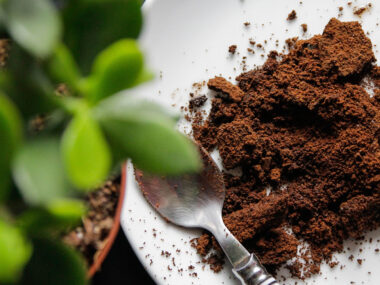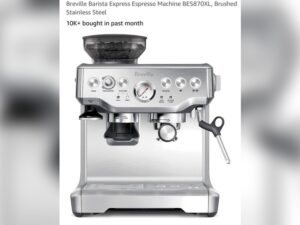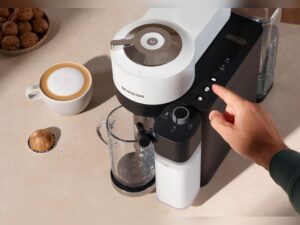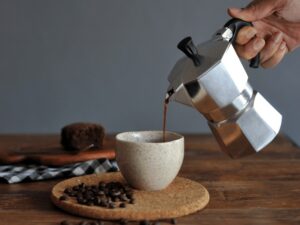Many wonder how many tablespoons of coffee per cup are ideal. The standard is two tablespoons, but you can adjust based on taste and strength preferences.
Coffee lovers often wonder about the perfect coffee-to-water ratio. Making that perfect cup can be an art form. The right balance of coffee grounds to water creates the ideal brew. Too much coffee can be overwhelming, while too little can be bland.
Understanding the right amount of coffee per cup ensures a delicious and satisfying drink. This guide will explore different measurements to help you find your perfect cup. Whether you like it strong or mild, knowing the right tablespoons of coffee per cup can change your coffee experience. Ready to brew the perfect cup? Let’s dive in!
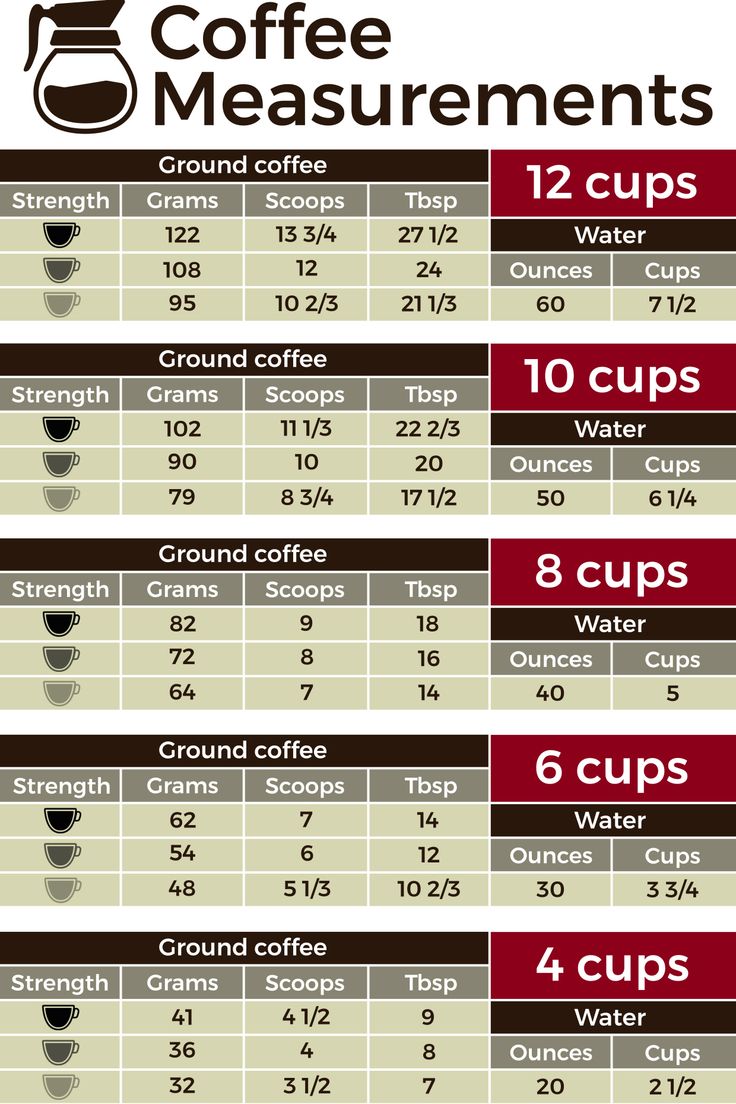
Credit: www.umamicart.com
Coffee Measurement Basics
Making the perfect cup of coffee starts with understanding coffee measurement basics. How many tablespoons of coffee per cup is a question many coffee lovers ask. Precise measurements can transform a regular cup into an extraordinary one. Let’s dive into the essentials of coffee measurements.
Importance Of Accurate Measurements
Accurate measurements are crucial for a consistent and delicious cup of coffee. Using the right amount of coffee grounds ensures the flavor is balanced and not too weak or too strong.
Here are a few reasons why accurate measurements matter:
- Consistency: Precise measurements help achieve the same great taste every time.
- Flavor Balance: The right amount of coffee grounds balances the bitterness and acidity.
- Cost Efficiency: Proper measurements prevent wastage of coffee grounds.
- Brewing Time: Accurate measurements ensure the coffee brews at the optimal time.
For those who love to experiment, accurate measurements allow for better control over the brewing process. This can lead to discovering new flavors and preferences.
| Measurement | Grams of Coffee | Flavor Profile |
|---|---|---|
| 1 Tablespoon | 5-7 grams | Mild |
| 2 Tablespoons | 10-14 grams | Medium |
| 3 Tablespoons | 15-21 grams | Strong |
Common Measurement Units
Several common units are used to measure coffee. Understanding these units helps in achieving the perfect brew.
The most common units include:
- Tablespoons: A simple and widely used method. One tablespoon of coffee is roughly 5-7 grams.
- Grams: Preferred by professionals. It provides precise measurement.
- Cups: Often used in recipes. One cup of coffee is typically 6-8 ounces.
- Scoops: Coffee scoops are designed for convenience. One scoop usually equals two tablespoons.
Here’s a handy table to understand the conversions:
| Unit | Equivalent |
|---|---|
| 1 Tablespoon | 5-7 grams |
| 1 Scoop | 2 Tablespoons |
| 1 Cup | 6-8 ounces |
Using these units, you can easily adjust the amount of coffee to your taste. It’s all about finding the right balance for your perfect cup.
Standard Coffee Ratios
Many people ask, “How many tablespoons of coffee per cup?” The answer can vary, but knowing the standard coffee ratios can help. These ratios ensure your coffee tastes just right every time. Let’s explore the best coffee-to-water measurements for a perfect brew.
General Guidelines
The standard coffee ratio is simple. It’s often recommended to use one to two tablespoons of ground coffee for every six ounces of water. This ratio suits most tastes and brew methods. Here’s a quick guide:
- Light Coffee: Use one tablespoon of coffee per six ounces of water.
- Medium Coffee: Use one and a half tablespoons of coffee per six ounces of water.
- Strong Coffee: Use two tablespoons of coffee per six ounces of water.
For easy reference, here’s a table showing different ratios:
| Water (oz) | Light Coffee (tbsp) | Medium Coffee (tbsp) | Strong Coffee (tbsp) |
|---|---|---|---|
| 6 | 1 | 1.5 | 2 |
| 12 | 2 | 3 | 4 |
| 18 | 3 | 4.5 | 6 |
Using these ratios ensures a balanced cup of coffee. Adjust according to your preference for light, medium, or strong coffee.
Factors Affecting Ratios
Several factors can affect your coffee ratios. Understanding these helps you tweak your brew for the best taste. Here are some key factors:
- Coffee Grind Size: The grind size influences extraction. Finer grinds extract faster and can taste stronger. Coarser grinds take longer and may need more coffee to achieve the desired strength.
- Brewing Method: Different methods require different ratios. For example, French press coffee might need a coarser grind and more coffee. Espresso, on the other hand, uses a finer grind and a higher coffee-to-water ratio.
- Water Quality: The taste of your water affects your coffee. Use filtered water for the best results. Hard or soft water can change the flavor.
- Personal Preference: Everyone’s taste is different. Some like their coffee strong, others prefer it lighter. Adjust the ratios to suit your taste.
Here’s a quick table summarizing these factors:
| Factor | Impact on Ratio |
|---|---|
| Grind Size | Finer grinds need less coffee, coarser grinds need more. |
| Brewing Method | Methods like French press need more coffee, espresso needs less. |
| Water Quality | Filtered water gives a better taste. |
| Personal Preference | Adjust based on your taste preference. |
By considering these factors, you can find the perfect coffee ratio for your taste. Enjoy your perfect cup of coffee!
Types Of Coffee Grinds
When brewing coffee, the grind size plays a crucial role in determining the flavor and strength of your cup. The number of tablespoons of coffee per cup depends significantly on the type of coffee grind used. Understanding the different types of coffee grinds and their impact on your drink can help you brew the perfect cup every time.
Coarse Vs. Fine
Choosing between coarse and fine coffee grinds can affect the brewing method and the taste of your coffee. Here are some differences:
- Coarse Grinds: These are chunky and resemble sea salt. They are ideal for French press and cold brew methods.
- Fine Grinds: These are powdery, similar to table salt. They work best for espresso and Aeropress methods.
Each grind type is suited to different brewing techniques:
| Grind Type | Brewing Method |
|---|---|
| Coarse | French Press, Cold Brew |
| Medium | Drip Coffee Makers, Pour Over |
| Fine | Espresso Machines, Aeropress |
Using the correct grind ensures the coffee extracts properly. Coarse grinds need more brewing time, while fine grinds require less. Incorrect grind size can lead to over-extraction or under-extraction, impacting the flavor.
Impact On Flavor
The grind size not only affects the brewing method but also the flavor of your coffee:
- Coarse Grinds: These create a less intense flavor. The larger particles mean slower extraction, resulting in a smoother, less bitter taste.
- Fine Grinds: These produce a stronger flavor. The smaller particles extract quickly, giving a richer and sometimes more bitter taste.
The table below shows how grind size affects flavor:
| Grind Size | Flavor Profile |
|---|---|
| Coarse | Smooth, less bitter |
| Medium | Balanced, mild bitterness |
| Fine | Rich, potentially bitter |
Finding the right grind size for your taste preferences can make a significant difference. Experiment with different grind sizes to discover your ideal flavor profile. Remember, the grind size impacts both the brewing time and the final taste of your coffee.
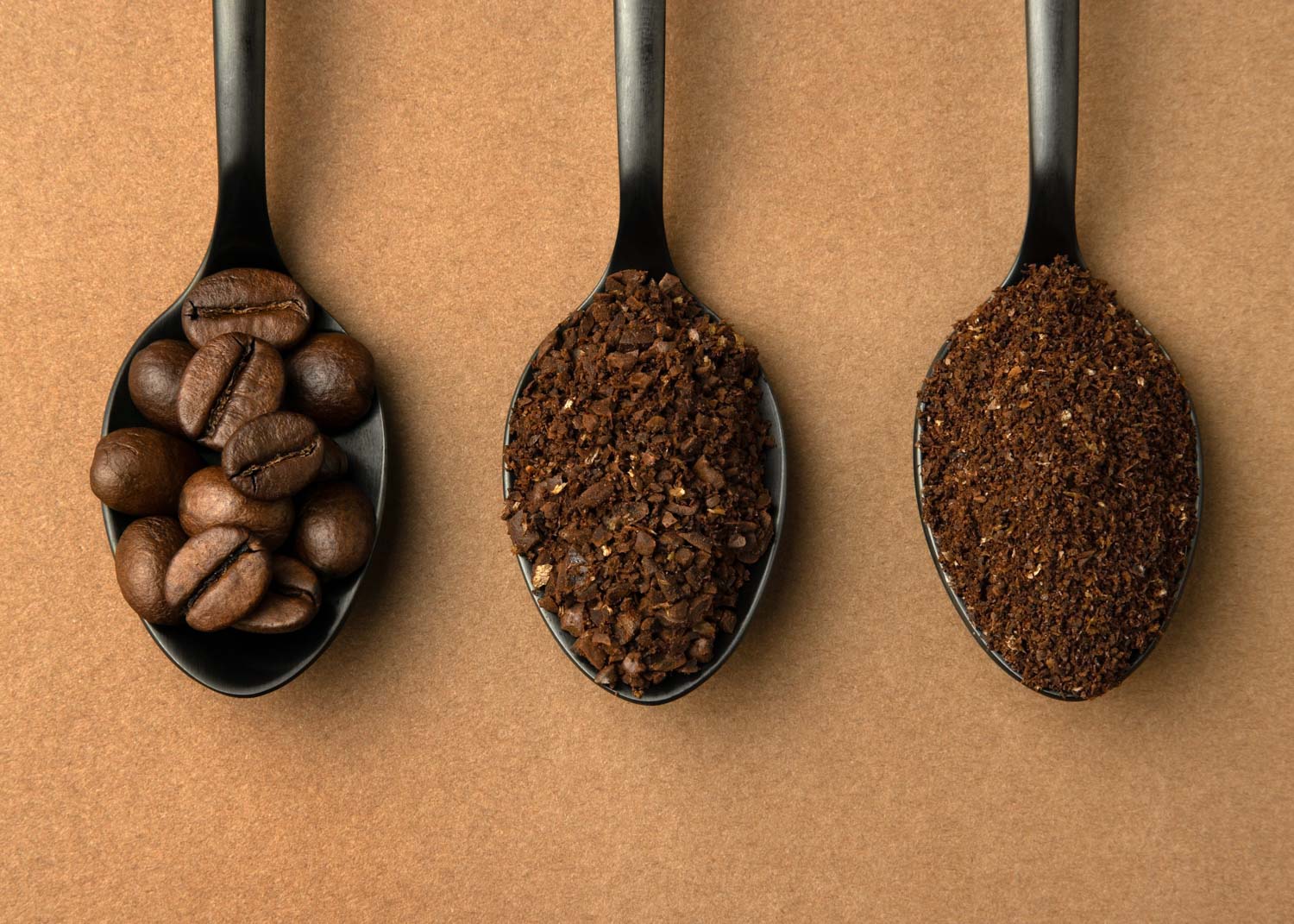
Credit: www.coffeefriend.co.uk
Brewing Methods
Making the perfect cup of coffee often depends on how much coffee you use per cup. Different brewing methods require different amounts of coffee for the best taste. This guide will help you understand the right tablespoons of coffee needed for various brewing techniques.
Drip Coffee
Drip coffee is one of the most popular brewing methods. It’s simple and quick, making it ideal for busy mornings. For drip coffee, the standard ratio is 1 to 2 tablespoons of coffee per 6 ounces of water. This ratio can be adjusted based on your taste preferences.
Here is a simple table to illustrate the amount of coffee needed:
| Number of Cups | Tablespoons of Coffee |
|---|---|
| 1 cup (6 oz) | 1-2 tbsp |
| 2 cups (12 oz) | 2-4 tbsp |
| 4 cups (24 oz) | 4-8 tbsp |
Here are some tips for making a great drip coffee:
- Use fresh, cold water.
- Ensure your coffee maker is clean.
- Use a medium grind for best results.
- Adjust the coffee amount to suit your taste.
Drip coffee makers can vary, so you might need to experiment a bit to find your perfect cup.
French Press
French press coffee is rich and full-bodied. The standard ratio for a French press is 2 tablespoons of coffee per 6 ounces of water. This method uses a coarser grind compared to drip coffee.
Here is a table to help you measure:
| Number of Cups | Tablespoons of Coffee |
|---|---|
| 1 cup (6 oz) | 2 tbsp |
| 2 cups (12 oz) | 4 tbsp |
| 4 cups (24 oz) | 8 tbsp |
Follow these steps for a perfect French press coffee:
- Add the coffee to the French press.
- Pour hot water (not boiling) over the coffee.
- Stir gently and let it steep for 4 minutes.
- Press the plunger down slowly.
- Pour and enjoy your coffee.
Some additional tips for French press:
- Use a coarse grind to avoid sediment.
- Preheat the French press for better temperature control.
- Experiment with steeping time for your preferred strength.
French press coffee offers a unique flavor profile that many coffee lovers enjoy.
Personal Taste Preferences
Brewing the perfect cup of coffee is an art. The amount of coffee you use per cup can vary based on personal taste preferences. Finding the right balance can be a journey of trial and error. Let’s explore how adjusting the strength of your coffee and experimenting with different ratios can help you discover your perfect brew.
Adjusting For Strength
Everyone has a unique preference for how strong they like their coffee. Some enjoy a robust, bold flavor, while others prefer a milder taste. To adjust the strength of your coffee, consider the following:
- Standard Recommendation: Start with 1 to 2 tablespoons of coffee per 6 ounces of water.
- Stronger Coffee: Use more coffee grounds. Try 2 to 3 tablespoons per 6 ounces of water.
- Milder Coffee: Use less coffee grounds. Use 1 to 1.5 tablespoons per 6 ounces of water.
To make adjustments easier, here is a simple table:
| Coffee Strength | Tablespoons of Coffee per 6 oz Water |
|---|---|
| Standard | 1 to 2 |
| Strong | 2 to 3 |
| Mild | 1 to 1.5 |
Adjusting for strength is a matter of personal taste. Experiment with different amounts to find the strength you prefer. Keep in mind that the type of coffee bean and grind size can also affect the strength of your brew.
Experimenting With Ratios
Finding the perfect coffee-to-water ratio is crucial for a satisfying cup of coffee. Here are some tips for experimenting with ratios:
- Golden Ratio: A common starting point is the golden ratio of 1:16. This means 1 part coffee to 16 parts water.
- Adjusting the Ratio: If the coffee is too strong, increase the water. If it’s too weak, add more coffee.
Let’s look at some common ratios:
| Ratio | Tablespoons of Coffee | Ounces of Water |
|---|---|---|
| 1:15 | 2 | 30 |
| 1:16 | 2 | 32 |
| 1:17 | 2 | 34 |
Experimenting with ratios can help you find the perfect balance. Use a kitchen scale to measure your coffee and water for precise results. Record your ratios and taste preferences to replicate your perfect cup of coffee every time.
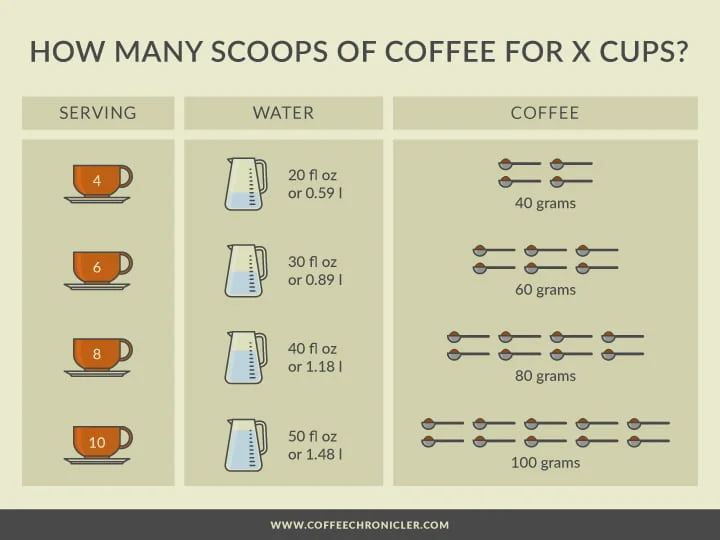
Credit: coffeechronicler.com
Measuring Tools
Making a perfect cup of coffee can depend on many factors. One important factor is the amount of coffee you use. Measuring tools play a key role in this process. Knowing how many tablespoons of coffee per cup is crucial. This guide will help you understand the right tools to use.
Spoons Vs. Scales
Using spoons and scales can both measure coffee, but they work differently. Spoons are simple and easy to use. You might already have them in your kitchen. A tablespoon is roughly equal to 5 grams of coffee.
Here is a quick table to show common measurements:
| Tablespoons | Grams of Coffee |
|---|---|
| 1 | 5 |
| 2 | 10 |
| 3 | 15 |
One downside is that spoons can be less precise. Coffee grounds can vary in size. This affects how much fits into a spoon. Scales are more accurate. They measure the exact weight of coffee. This method is reliable and consistent.
Here are some benefits of using scales:
- Consistent measurement
- More precise
- Adjustable for different coffee grounds
For exact measurements, a scale is the best tool. It takes away the guesswork. You know exactly how much coffee you are using every time.
Using A Coffee Scoop
A coffee scoop is another useful tool. It is designed specifically for measuring coffee. Most coffee scoops are equal to two tablespoons or around 10 grams.
Using a coffee scoop is easy:
- Fill the scoop with coffee grounds
- Level off the top for an even amount
- Pour the coffee into your coffee maker
Here’s a quick comparison:
| Tool | Average Measurement |
|---|---|
| Tablespoon | 5 grams |
| Coffee Scoop | 10 grams |
Using a coffee scoop can save time. You do not need to measure each tablespoon. Just scoop and go. For a standard cup of coffee, one scoop is usually enough.
Remember, measuring tools help you make better coffee. Whether you use spoons, scales, or scoops, knowing the right amount of coffee is key. This leads to a better tasting cup every time.
Common Mistakes
Many people ask, “How many tablespoons of coffee per cup?” While the answer might seem straightforward, there are common mistakes that can affect the taste and quality of your coffee. Understanding these pitfalls can help you make a perfect cup every time.
Over Or Under Measuring
One of the most common mistakes is over or under measuring your coffee. This can lead to a brew that’s either too strong or too weak. Let’s break down the right measurements:
- Standard Measure: Use 1 to 2 tablespoons of coffee per 6 ounces of water.
- Strong Coffee: Use 2 tablespoons per 6 ounces of water.
- Mild Coffee: Use 1 tablespoon per 6 ounces of water.
Using a kitchen scale for accuracy can also help. Here’s a simple table to remember:
| Type | Tablespoons | Ounces of Water |
|---|---|---|
| Standard | 1-2 | 6 |
| Strong | 2 | 6 |
| Mild | 1 | 6 |
Avoid eyeballing the amount. Use a spoon or scale to measure accurately. This ensures consistency and a better tasting cup of coffee.
Ignoring Grind Size
Another mistake is ignoring the grind size. The grind size can change how your coffee tastes. Here’s what you need to know:
- Coarse Grind: Best for French Press.
- Medium Grind: Ideal for drip coffee makers.
- Fine Grind: Perfect for espresso machines.
Using the wrong grind size can result in over-extraction or under-extraction. Over-extraction makes coffee taste bitter. Under-extraction makes it sour. Here’s a quick guide:
| Brewing Method | Grind Size |
|---|---|
| French Press | Coarse |
| Drip Coffee Maker | Medium |
| Espresso Machine | Fine |
Match the grind size to your brewing method for the best results. This simple step can make a big difference in your coffee’s flavor.
Expert Tips
Brewing the perfect cup of coffee can be an art. Knowing how many tablespoons of coffee per cup can make a difference. Expert tips can guide you in achieving the best flavor and strength. Let’s dive into some professional advice and resources to perfect your coffee-making skills.
Seeking Professional Advice
Professional baristas and coffee experts have valuable insights. Their experience ensures the best coffee-to-water ratio. Here are some tips they often share:
- Standard Ratio: Use 2 tablespoons of coffee per 6 ounces of water. This is a common starting point.
- Experiment: Adjust the ratio to suit your taste. Some prefer stronger coffee, using 3 tablespoons.
- Coffee Type: Different beans and grinds impact flavor. Fine grinds often require less coffee.
Baristas suggest using a scale to measure coffee accurately. This helps achieve consistency. Below is a quick reference table:
| Coffee | Water |
|---|---|
| 2 tablespoons | 6 ounces |
| 3 tablespoons | 6 ounces (strong) |
| 1 tablespoon | 6 ounces (light) |
Experts also recommend fresh, filtered water. Avoid tap water with chlorine. It can alter the taste. Use the right temperature, ideally between 195°F and 205°F. Too hot or too cold water affects extraction.
Seeking advice from professionals can refine your coffee brewing skills. They often emphasize the importance of quality beans, precise measurements, and clean equipment.
Utilizing Coffee Resources
There are various resources to help you brew better coffee. Online platforms, books, and courses offer valuable information. Here are some places to start:
- Online Forums: Websites like CoffeeGeek and Home-Barista provide community advice. Engage with other coffee enthusiasts.
- Books: Read books like “The World Atlas of Coffee” by James Hoffmann. It offers in-depth knowledge on coffee beans and brewing methods.
- Courses: Take online courses or attend workshops. Platforms like Udemy offer classes on coffee brewing techniques.
Some websites also offer brewing calculators. These tools help determine the right coffee-to-water ratio. They consider factors like grind size and brewing method.
Utilizing these resources can enhance your coffee-making experience. They provide detailed guides, tips, and community support. Below is a list of useful websites:
Explore these resources to improve your skills. They offer practical advice and expert tips. Whether you’re a beginner or experienced, there’s always something new to learn.
Frequently Asked Questions
How Many Tablespoons Of Coffee Do You Use Per Cup?
Use 1 to 2 tablespoons of coffee per 6-ounce cup for a balanced brew. Adjust based on taste preference.
How Much Coffee Do I Use For 1 Cup Of Coffee?
Use 1 to 2 tablespoons of ground coffee per 6 ounces of water. Adjust to taste.
How Much Coffee Do I Use For 4 Cups Of Water?
Use 8 tablespoons (or 1/2 cup) of ground coffee for 4 cups of water. This creates a balanced, flavorful brew.
How Much Coffee Do You Put In A 12 Cup Coffee Maker?
Use 12 tablespoons of ground coffee for a 12 cup coffee maker. Adjust to taste preference if needed.
Conclusion
Finding the right balance of coffee is simple. Just follow the guidelines. Use two tablespoons per cup for a perfect brew. Adjust to your taste. A bit more for a stronger flavor. Less for a lighter cup. Enjoy experimenting with your coffee.
Each cup can be a new experience. Remember, the best coffee is the one you love. Brew, taste, and enjoy your perfect cup. Savor every sip!
